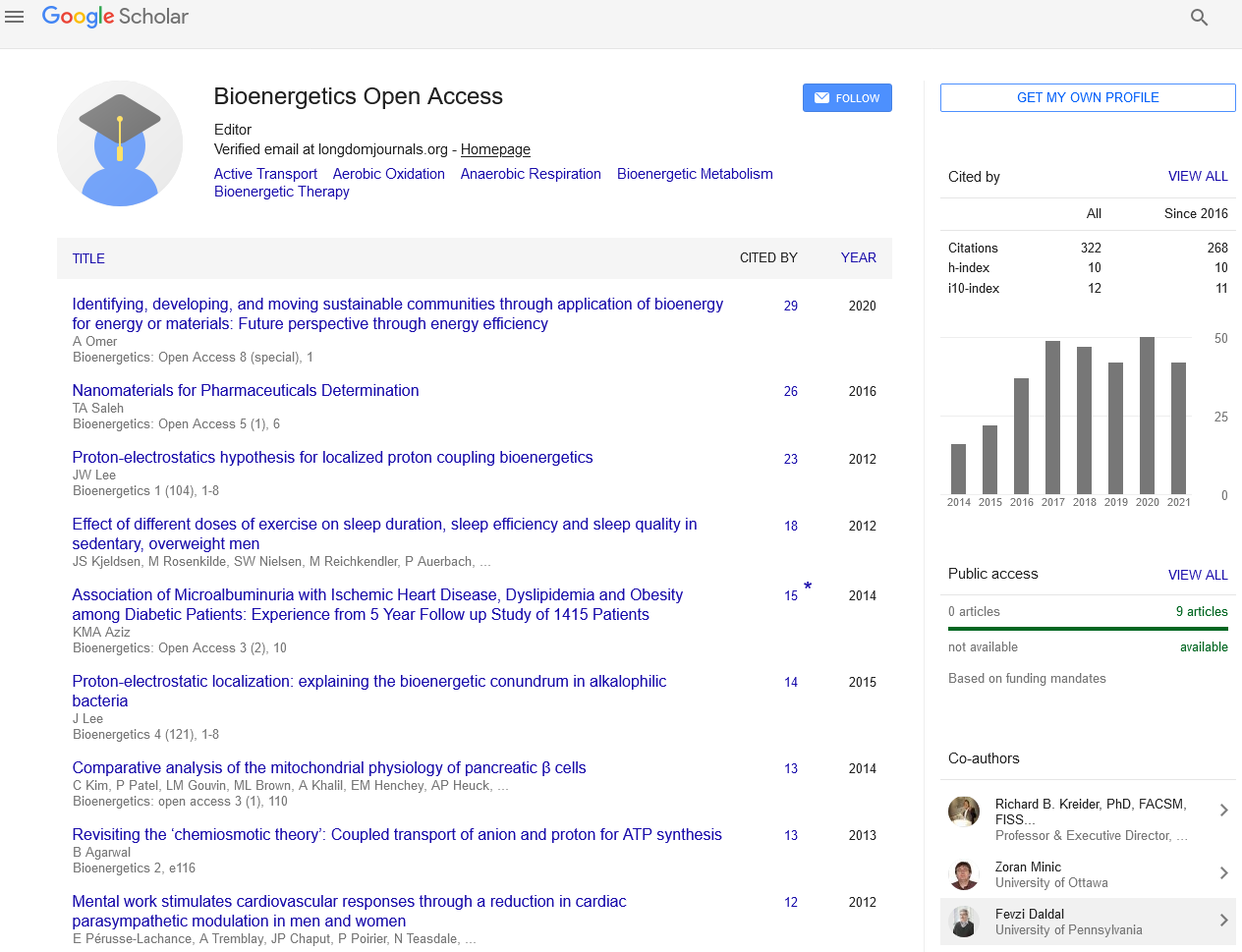Indexed In
- Open J Gate
- Genamics JournalSeek
- Academic Keys
- ResearchBible
- RefSeek
- Directory of Research Journal Indexing (DRJI)
- Hamdard University
- EBSCO A-Z
- OCLC- WorldCat
- Scholarsteer
- Publons
- Euro Pub
- Google Scholar
Useful Links
Share This Page
Journal Flyer

Open Access Journals
- Agri and Aquaculture
- Biochemistry
- Bioinformatics & Systems Biology
- Business & Management
- Chemistry
- Clinical Sciences
- Engineering
- Food & Nutrition
- General Science
- Genetics & Molecular Biology
- Immunology & Microbiology
- Medical Sciences
- Neuroscience & Psychology
- Nursing & Health Care
- Pharmaceutical Sciences
Abstract
Ca2+ signaling and Target Binding Regulations: Calmodulin and Centrin In Vitro and In Vivo
Juan Martinez-Sanz, Dora Grecu and Liliane Assairi
Changes in Ca2+ concentrations act as a second messenger to regulate biological processes. Ca2+ sensor proteins transduce these Ca2+ signals upon binding to protein targets that are involved in the cellular process that is being regulated.
Ca2+ sensor proteins such as calmodulin and centrin bind Ca2+ through acidic residues that compose the EFhand motifs and further bind targets via surfaces that recognize specific motifs on targets. However, in some cases, the binding of a Ca2+ sensor protein to a target can occur in the absence of Ca2+. Upon Ca2+ binding, Ca2+-sensor proteins undergo conformational changes, which lead to the exposure of surface that interacts with target. Moreover, Ca2+ binding and the binding of Ca2+ sensors to targets induce conformational changes that drive regulation. Comparisons of the Ca2+-sensor proteins calmodulin and centrin provide information on regulatory processes.

